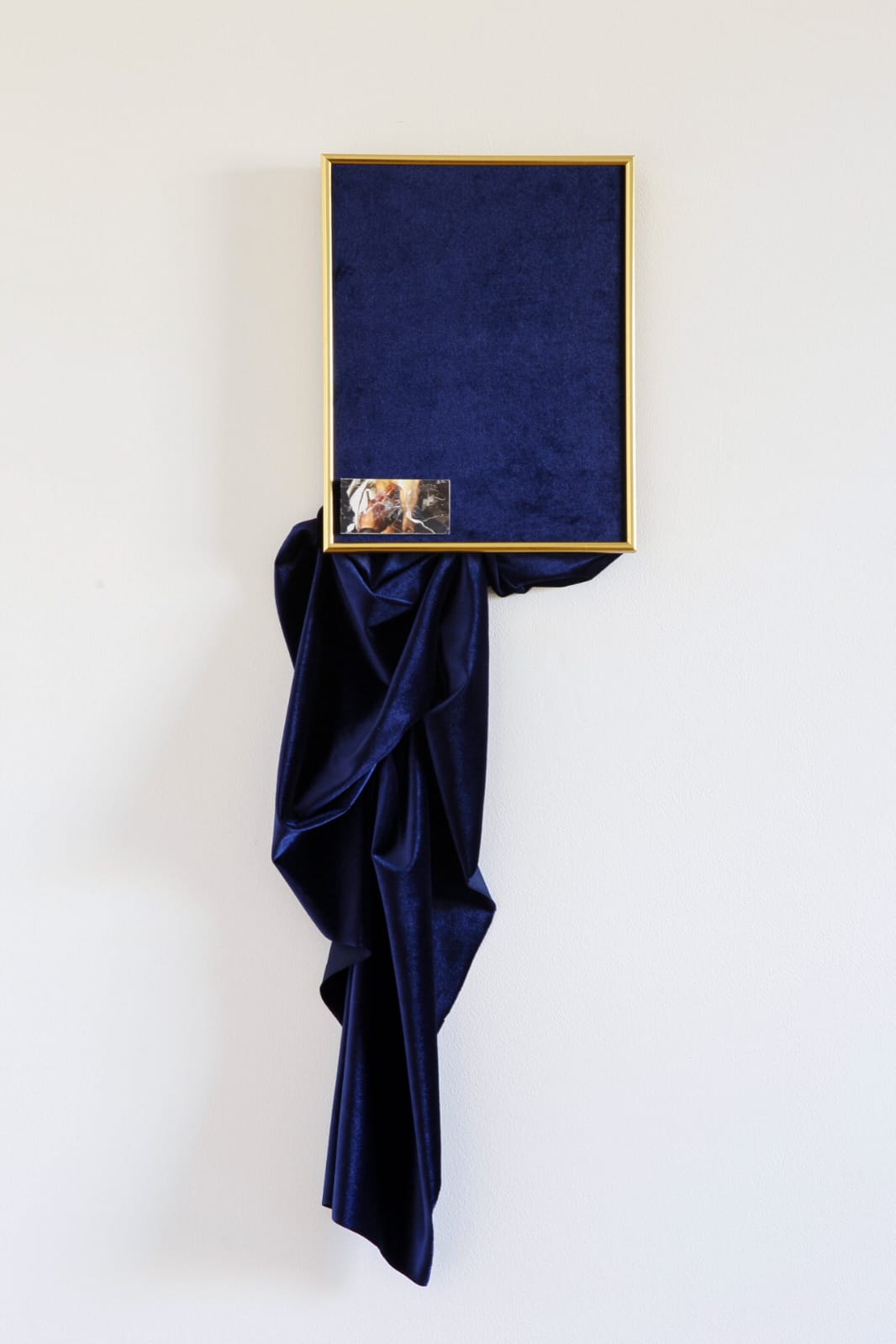




From top to bottom, left to right:
1. Detail of Alternate Readings
2. Install view left to right Over the 6th, Any Second Now (2023) and The word turquoise (2025).
2.The word turquoise(2025); Framed and mounted digital print on fabriano (600 x 800)
3. Alternate Readings (2024); (dimensions variable) framed velvet fabric, scotch tape, printed image on mountboard.
4. Install view. Left to right, Alternate Readings (2024), Over the 6th, Any Second Now (2023), T-U-R-Q-U-O-I-S-E (2025).
Still of The Heckler (2025); 11’
Photography by Silvina Sisterna
Exhibition Text:
Clerical Error offers scenarios of altered perception using video, sound, printed text and sculptural elements. It draws from widely varied sources: catholic mysticism, operatic technique, horse racing commentary and the writing of Maggie Nelson. Textual error is a throughline of the work, allowing it to revel in its own misinterpretation, vagueness, and speculative qualities. Drawing from a quote from Nelson’s memior Bluets where she says:
“I will not choose between the blue things of the world and the words that say them: you might as well be heating up the poker and readying your eyes for the altar. Your loss”.
In Clerical error interpretation is constantly at odds with experience itself: many of the works speculate on forms of illiteracy and draw attention to the physicality of written and verbal communication. Maggie Nelson describes a rare form of colour blindness, known as acyanoblepsia, in which blue can not be perceived. A potential cure for it is Sildenafil, the active ingredient in Viagra, which increases blood flow to photoreceptors in the eyes. As a side effect, users see a more vibrant blue tint, T-U-R-Q-U-O-I-S-E reimagines this side effect as it’s original intended use.
Many of the pieces intend to be misread: in Over the Sixth, Any Second Now: an announcer describes the perpetually occurring event of the racehorse Any Second Now’s grand national run.
The Heckler also features misreading. It reimagines the trial of fifteenth-century Abbess and mystic Benedeta Carlini, who claimed she was possessed by a male angel in order to pursue a sexual relationship with another nun. The lack of conceptual schema surrounding female homosexuality in Renaissance Italy meant that the written evidence was linguistically distorted, both in its vocabulary and in the handwriting itself. The piece recounts this event in a theatrical monologue, switching between written and recorded text which is constantly being interrupted. Using incoherent audio, textual error, and nonverbal speech, the piece suggests a queer female experience outside of contemporary language.
Similarly, Alternate Readings draws upon haptic forms of religious ecstasy experienced by medieval mystics, some of whom were illiterate. Medieval mystical texts often represent the slit in the side of Christ’s corpse as a physical tear on the page that the devout, in imitation of doubting Thomas, could interact with.
This exhibition was supportend by The Arts Council and Dun Laoghaire Rathdown County Council.
